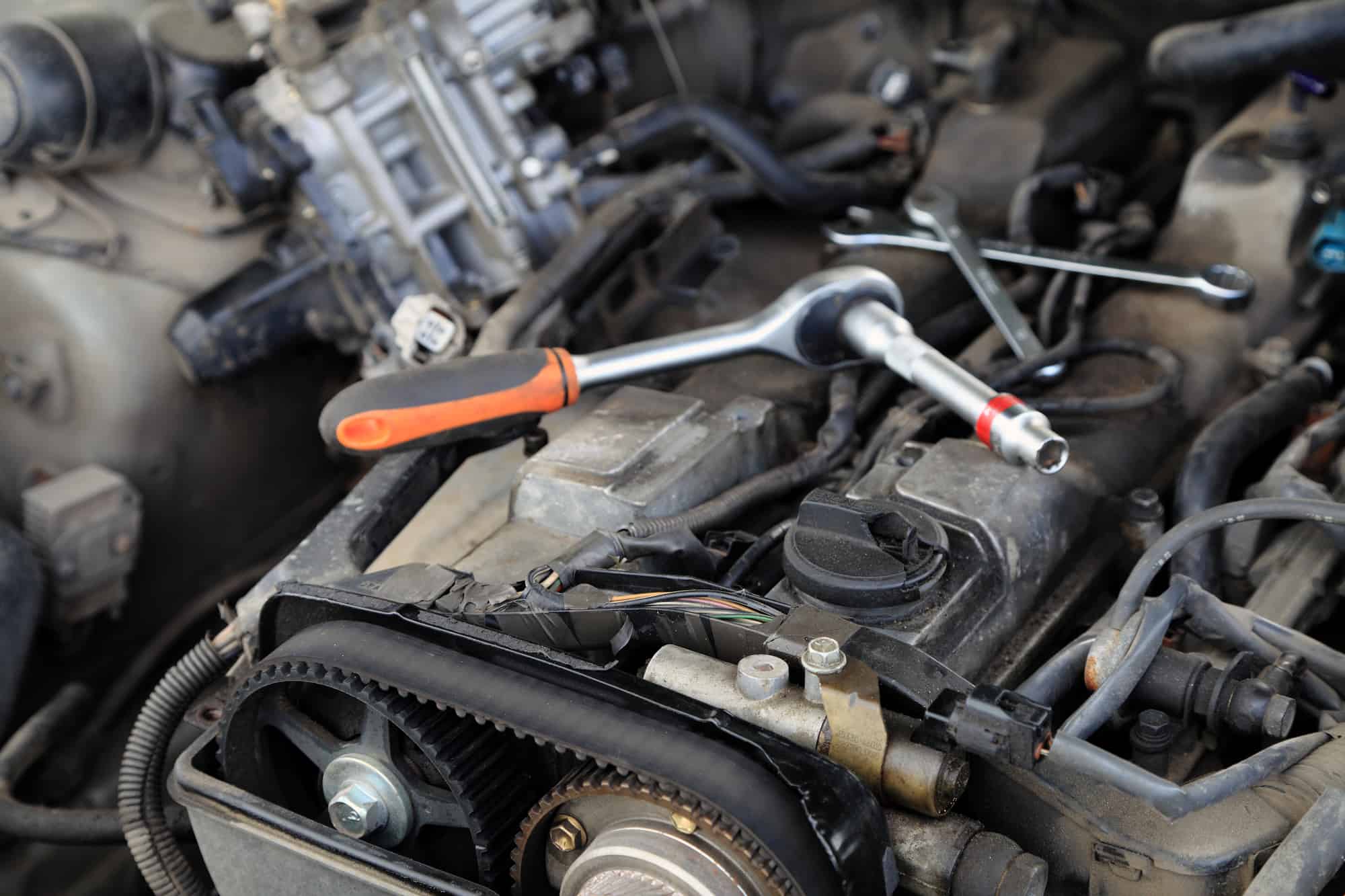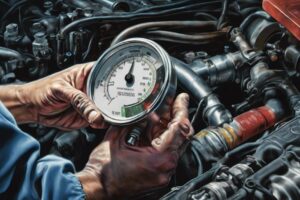What Does Engine Code P2181 Mean?
- P2181 Technical Definition: Cooling System Performance
- P2181 Meaning: There is a problem with the coolant system
- Most common cause: Coolant Leak or faultyEngine Coolant Temperature sensor (ECT)
- Risks for the engine/driver: High Don’t drive your car until you get it checked out, doing so could result in permanent engine damage
- Emissions severity: Medium. The car may not pass emissions testing
- Estimated repair time: 2+ days
- Estimated repair cost: $100+
The OBD2 engine code P2181 is stored in memory when the Electronic Control Unit (ECU) senses an abnormally high engine coolant temperature.
The Engine Coolant Temperature sensor (ECT) is in charge of reporting the engine temperature to the ECU. The ECT information is used by the ECU for many calculations like spark timing and fuel delivery adjustments (more fuel is needed at lower temperatures).
Engine temperature is also used to determine if it’s necessary to activate some actuators like the EGR valve, engine cooling fan or EVAP purge. Besides controlling the fuel injection system, the ECU stores the average engine temperature, the time needed for reaching the normal operating temperature and the lowest and highest temperature reached by the engine.
The P2181 code is set when the ECU detects a coolant temperature outside its normal parameters. Usually, this code is set when the engine is suffering from overheating.
To prevent potential engine damage when this condition is met, the ECU will usually enter emergency mode. The strategy to safeguard an engine varies from one automaker to other, but usually includes lowering engine power output, powering off cylinders and even killing the engine if considered necessary.
7 Common Symptoms When Code P2181 Is Present
The most common symptoms of data trouble code P2181are:
- Check Engine Light (CEL).
- Difficulty during engine start, in few cases even a no start condition.
- Rough idle.
- Gas smell from the exhaust pipe.
- Possible smoke from the exhaust pipe.
- An emergency message, emergency light lit on the panel.
- Higher than normal engine coolant temperature.
Possible Causes For Error Code P2181
The most common causes of data trouble code P2181 are:
- Defective cooling fan motor.
- Engine coolant leak.
- Faulty radiator cap.
- Faulty thermostat (stuck closed)
- Defective or faulty water pump.
- Detective radiator or heater core.
- Blown cylinder head gasket.
- Faulty ECT
How To Diagnose The Engine Code P2181
For the purpose of this article, it’s assumed that you have a basic knowledge of safety precautions while working on your vehicle.
Always refer to the appropriate OEM literature when possible. Original manufacturer diagnostic procedures should always have precedence over a generic workflow.
That said, let’s start the diagnostic process!
1. Preliminary steps
To discard a possible intermittent DTC condition, you’ll need to clear the ECU memory and complete a driving cycle.
- Read data trouble codes and take note of them.
- Clear data trouble codes memory.
- Perform a driving cycle (at least 5-10 minutes).
In case the Check Engine Light stays off then you may have an intermittent problem. If the light lit during your driving cycle then continue with the diagnostic process.
2. Visual Inspection
> Coolant Hoses inspection: perform a meticulous visual inspection of engine coolant hoses and hose clamps. Look for leaks or signs of wear. Replace as necessary.
> Water Pump visual inspection: perform a meticulous visual inspection of the water pump. If you notice any leak coming from the pump then you will need to replace it.
> Radiator and Heater core test: using the appropriate radiator pressure tester perform a complete coolant pressure system check. This check is very important because should uncover any coolant leak in the system. Repair as necessary.
> Cooling Fan test: verify that the cooling fan is working properly. A quick test is turning on the A/C system. The cooling fan should turn on shortly afterward. Replace the cooling fan as needed.
> Thermostat visual inspection: wait until the engine is completely cold. Remove the thermostat from the engine and check that is working properly. Replace as necessary.
> Radiator cap test: using the appropriate radiator cap tester verify its integrity. Replace as necessary.
Fix any wiring problem before continuing.
3. Electrical Tests
> ECT electrical tests: using the appropriate OEM literature, check the sensor signal, and the reference voltage of the ECT sensor. Reference voltage should be greater than 4.5V. Repair any circuit line as necessary.
4. Scan Tool Tests
> Engine Coolant Temperature sensor test: depending on your vehicle and automotive scanner, you should be able to put on screen the actual ECT signal value. The value may be expressed on voltage or temperature units (°F or °C).
To perform a complete test, wait until the engine is totally cold, preferably leaving it overnight.
Start the engine. The ECT reading should be close to ambient temperature. If it’s not, it could be a bad sensor. Once you start the engine keep looking at the ECT value while the temperature rises.
Usually, it will take a minute or two to reach the normal operating temperature. Verify its value with a model specific repair manual. If you notice that the coolant temperature is higher than expected then kill the engine and check the sensor internal resistance. Compare the resistance with the appropriate literature. Change the sensor as needed. Keep in mind that you should complete the prior tests before suspecting a faulty ECT sensor.
How To Repair Engine Error Code P2181
Depending on the diagnostics results you may need to do the following:
- Replace the cooling fan.
- Repair engine coolant leak.
- Replace the radiator cap.
- Replace the thermostat
- Replace the water pump.
- Repair/Replace the radiator or heater core.
- Replace the ECT sensor











Is it possible for a bad ECT sensor to cause my car to overheat even if there are no visible leaks and the coolant level seems fine?
How can I accurately determine if the problem with my car is actually due to a faulty Engine Coolant Temperature sensor without replacing it first?